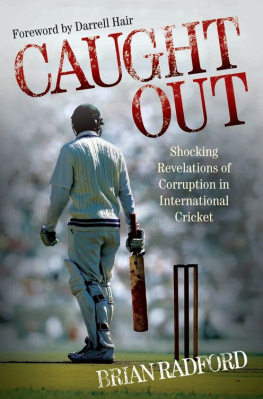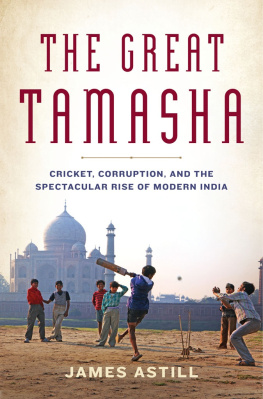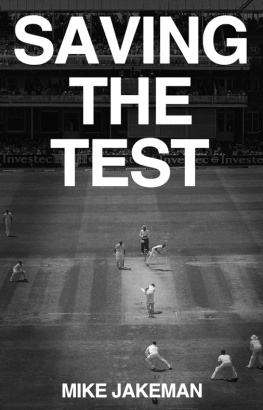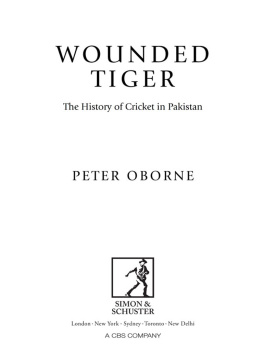Table of Contents
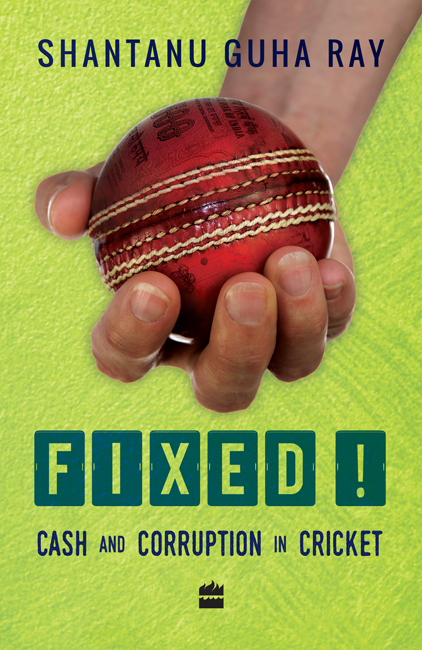
FIXED!
Cash and Corruption
in Cricket

SHANTANU GUHA RAY

Harper
Sport
For Keya and Bonny
My strength for life
CONTENTS

On 14 June 2015, former Chief Justice of India R.M. Lodha held a press conference in Delhi to announce his decision to ban two teamsChennai Super Kings (CSK) and Rajasthan Royals (RR)from the worlds most expensive cricket league, the Indian Premier League (IPL), for two years.
More than a hundred journaliststelevision reporters jostling for space with those from print, news agencies and portalsspoke together, raising the decibel level to a pitch that forced Lodha, at times, to cover his ears. Everyone wanted to know more than what Lodha had announced.
And Lodha, for all practical purposes, was not ready to oblige.
He had already suspended the franchisees of two of the leagues most successful teams for bringing the game into disrepute. It meant that under its existing ownership, CSK and RR, who had between them three IPL titles, would not be part of the league for some time.
Television channels played breaking newsthe court order had shaken up Indian and world cricket. The three-member panel had also handed life bans to Chennais and Rajasthans key officials, Gurunath Meiyappan and Raj Kundra respectively, that prevented them from participating in any cricket-related activity in the future. They had been found guilty of betting on matches and passing on information to bookmakers.
Meiyappan is the son-in-law of N. Srinivasan, former International Cricket Council (ICC) chairman and president of the Board of Control for Cricket in India (BCCI), and also the managing director of India Cements Limited. Raj Kundra, a successful businessman and husband of actor Shilpa Shetty, had an 11.7 per cent stake in Rajasthan Royals.
Justice Lodha, flanked by justices Ashok Bhan and R.V. Raveendran, began by punching holes in the defendants arguments. Disrepute has been brought to cricket to such an extent that doubts abound in the public whether the game is clean or not. The fact that Gurunath was an integral part of CSK and most people saw him as the face of the team, he ought not to have indulged in betting practices, Justice Lodha said, reading out the verdict. That the allegation of match-fixing against Kundra was not finally established does not matter because his status as owner has brought disrepute to the game. The argument that these acts were personal and the franchise cannot be responsible cannot be accepted, concluded the committee, set up in January 2015 to decide on the quantum of punishment. The decision, for all practical purposes, was final and binding, Justice Lodha explained. The Supreme Court order says it is subject to any remedy in appropriate judicial proceedings, so a challenge is available in court. But since this is a committee comprising three senior judges of the Supreme Court, it is highly unlikely a court will interfere.
Lodha said he would probe more and submit another report later. He did that in January 2016.
Former Justice Mukul Mudgal, who had conducted the first probe into the IPL illegal betting and spot-fixing scandal, had submitted another report in 2015.
This one was triggered by the demand of the Aam Admi Party-led government in Delhi to probe the Delhi and District Cricket Association (DDCA), and more importantly, its long-time boss, the current finance minister Arun Jaitley. AAP accused Jaitley of abetting rampant corruption in the DDCA and blamed him for deliberately overlooking the scandals and scams in the cricket body. Outraged, Jaitleyhe had seasoned journalist Rajat Sharma as his Man Friday in the courtsfiled a Rs 100 crore defamation suit against AAP in a Delhi Court.
But, interestingly, the Mudgal report on the DDCA supported the AAP stand, and castigated the cricket body for a large number of ills. The twenty-seven-page report, submitted to the Delhi High Court which had appointed him in November 2015 to oversee the fourth Test between India and South Africa at Feroz Shah Kotla, blamed DDCA for lack of transparency, poor record-keeping, huge delays in bill payments and mismanagement.
I went for a coffee at Choko La, a small eatery in Delhis Khan Market. I had called my source to seek an update from him.
The source walked in with a smile and told me: Dont think that the AAP complaint is enough. A lot is still under the carpet.
It is now widely known that a London-based detective agency was asked in 2013-14 to tap the phones of many officials of the BCCI, including those probing the 2013 IPL spot-fixing and betting scandal. The then BCCI president N. Srinivasan was the one who had paid the agency a whopping Rs 14 crore for the job.
What was the desperation? I asked.
Probably Srinivasan wanted to know if his own men were plotting against him and where the probe was heading towards.
Has it ever happened before?
No, the source replied. Even a decade ago, the situation was not so bad within the BCCI. But now, those controlling the cricket board want power with unflinching loyalty. Even if there is an iota of suspicion, it is tracked and nipped in the bud. The question was: Why wasnt Srinivasan a part of the Mudgal probe? Mudgal and his men had questioned a number of cricketers and bookiesbut how come they left out the man who was at the centre of the whole narrative?
I almost fell from the chair. The thought had not struck me earlier. Two high-level probes, yet investigations had revealed little, skimming just the surface and nabbing the small fry.
Despite cricket being almost next to religion in India, I realized the issue of corruption in cricketvery surprisinglywas hardly ever debated in Parliament. Why wouldnt the members of the Upper House and Lower House debate an issue as serious as spot-fixing and illegal betting? I remembered how cops in Mumbai, Kolkata, Chennai, Jaipur and Delhi had told me that their biggest concern was that in recent years illegal betting syndicates had developed powerful connections in the right corridors.
So how does the industry work?
It is an extremely secretive and complex network that works at various levels. For example, Indian bookies are known for picking up exotic locations to hoodwink the cops. Some take satellite phones and work out of villages, others bribe cops and work right next to the stadium, some set up shop in the top floors of fancy five-star hotels where theres minimal movement of guests. In two recent cases in Mumbai, bookies camouflaged themselves as members of an investor forum discussing the ills of real estate business in the city. While they discussed illegal cash and who will fix which player and teamit was before the 2014 edition of the IPLthe cops happily guarded the venue.
The network of bookies runs very, very deep across the world. It works like a well-oiled machine, almost like the simulation system of a jet engine. There are plenty of back-ups in place, and hardly much scope for failure. The word of mouth is sacrosanct, and cash is delivered within seconds.
Above them are the people who manage a group of bookies that operate in various parts of a city or a state. In India, for example, the nation is divided into five zones: east, south, north, west and central. These five zones are further divided into ten mini-zones, and those mini-zones are divided into thirty sub-mini zones. Those who head these zones get information and odds from a completely different set of individuals who are above them in the chain. The industrynon-existent on paperis structured in such a way that it makes it extremely difficult, even impossible, for people on the ground, the bookies, to know the ones operating in the layers above them in the chain of command.


